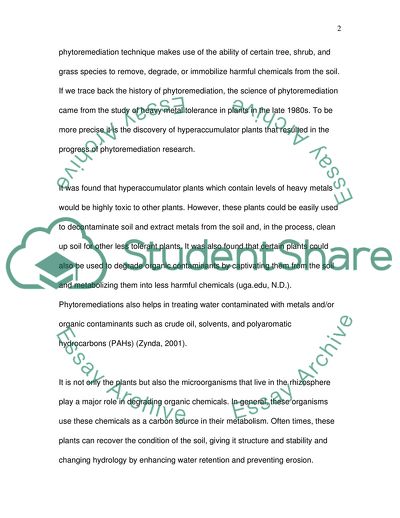Cite this document
(Phytoremediation - an emerging bioremediation technique. Is it proving Essay, n.d.)
Phytoremediation - an emerging bioremediation technique. Is it proving Essay. https://studentshare.org/environmental-studies/1713457-phytoremediation-an-emerging-bioremediation-technique-is-it-proving-to-be-effective
Phytoremediation - an emerging bioremediation technique. Is it proving Essay. https://studentshare.org/environmental-studies/1713457-phytoremediation-an-emerging-bioremediation-technique-is-it-proving-to-be-effective
(Phytoremediation - an Emerging Bioremediation Technique. Is It Proving Essay)
Phytoremediation - an Emerging Bioremediation Technique. Is It Proving Essay. https://studentshare.org/environmental-studies/1713457-phytoremediation-an-emerging-bioremediation-technique-is-it-proving-to-be-effective.
Phytoremediation - an Emerging Bioremediation Technique. Is It Proving Essay. https://studentshare.org/environmental-studies/1713457-phytoremediation-an-emerging-bioremediation-technique-is-it-proving-to-be-effective.
“Phytoremediation - an Emerging Bioremediation Technique. Is It Proving Essay”. https://studentshare.org/environmental-studies/1713457-phytoremediation-an-emerging-bioremediation-technique-is-it-proving-to-be-effective.


